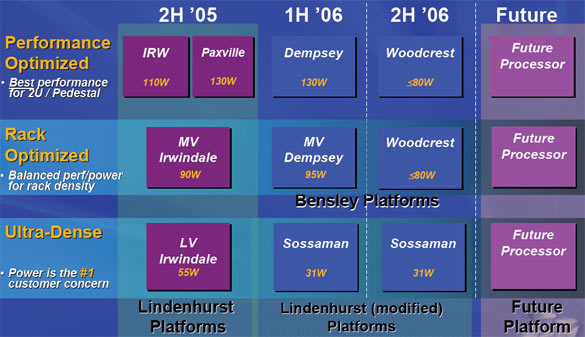Intel's Next-Generation Server Promises
Conclusion
From what Intel keeps preaching, the new micro architecture is on track to regain both the performance crown and the performance-per-watt crown from AMD at the end of 2006. Since there is not much CPU information available to assess the plausibility of these claims, the only facts we can base our conclusion on for now are the details regarding the upcoming server platform.
First of all, we have to note that the future Xeon processors based on NetBurst and the 65-nm process very likely aren't going to make much of a difference. In many industry benchmarks such as the SPEC JBB, WEB2005 or TPC-C scenarios, the Opterons are far enough away to stay ahead.
Here we recommend checking out the server product information pages of the larger OEMs- these always include the industry standard benchmark results for comparison.
However, the new platform approach clearly is targeted at making server platforms more reliable, more robust, more flexible and overall more attractive - even though the performance advantage in the DP server space could easily remain with AMD.
Bensley is going to introduce a number of features that the competitor is either delivering later (virtualization) or not delivering by itself (Active Management, I/O acceleration), but in conjunction with third-party partners. Finally there is quad-channel memory, which may not necessarily be as fast as its name portends.
Get Tom's Hardware's best news and in-depth reviews, straight to your inbox.

Patrick Schmid was the editor-in-chief for Tom's Hardware from 2005 to 2006. He wrote numerous articles on a wide range of hardware topics, including storage, CPUs, and system builds.
